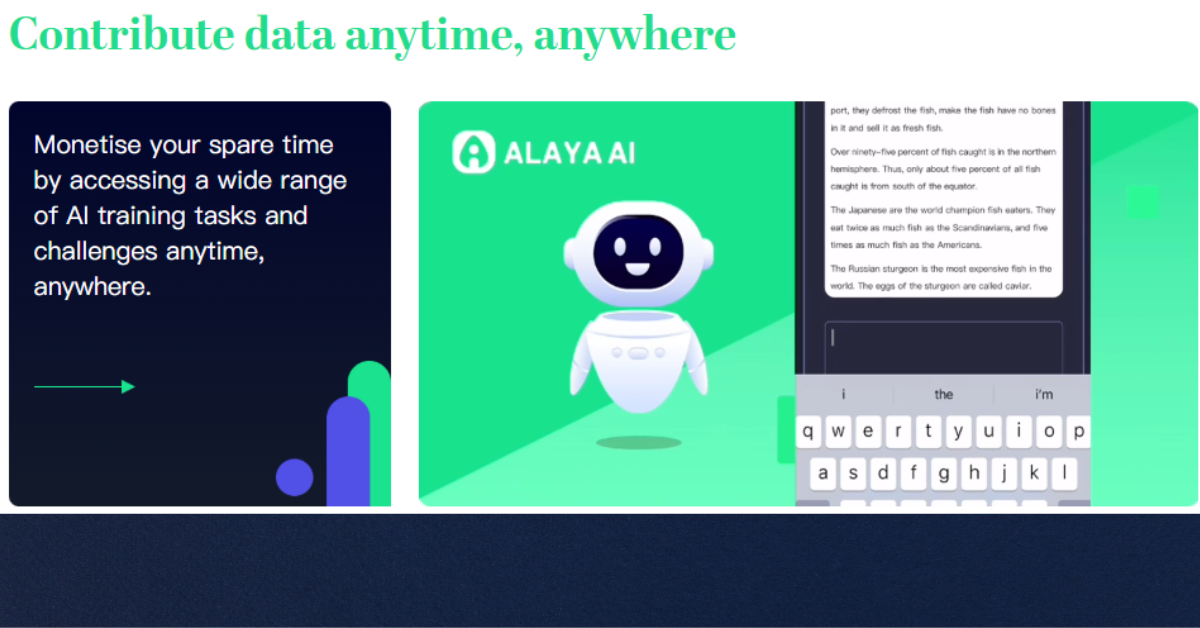Can Alaya AI truly change the way we store data now by blending artificial intelligence, blockchain technology, and swarm intelligence in a more neutral ecosystem? A solution that is driven by the community and is safe to use, to collect and annotate various types of data, that can help make AI models more accurate and inclusive.
Alaya AI combines AI, blockchain, and swarm intelligence to create a unique decentralized ecosystem that is a major leap from the current data management paradigm. Furthermore, the platform is also a cost-effective, human-centric, and engaging method for gathering and obtaining various annotated datasets that cater to the exact requirements without any bias.
Real-World Applications: Promising, But Underdeveloped
The AI company Alaya states its target industries are healthcare and finance, the places where they assist in increasing data accuracy and security. An instance would be securing the privacy of health records without any collaboration, and it establishes a shared data network. In the financial sector, the system of the company offers improvement in fraud detection by data validation and identifying patterns.
However, real-world case studies are notably absent. There is no available documentation on active partnerships, pilot programs, or measurable outcomes. In high-stakes sectors like healthcare, compliance with standards such as HIPAA, GDPR, or HITRUST is non-negotiable—yet these aren’t mentioned. Without evidence of adoption or regulatory approval, Alaya AI’s impact remains theoretical.
Simplifying Complex Technologies: Where’s the Depth?
Swarm intelligence, a core pillar of Alaya AI, refers to distributed problem-solving inspired by collective behavior. The platform claims to apply this for global data sourcing and annotation, but offers no technical clarity on how decentralized contributors are coordinated, how consensus is reached, or how conflicts are resolved.
Similarly, the blockchain element is touted as a solution for data immutability and ownership. While this theoretically strengthens data security, the article ignores key trade-offs—including transaction fees, latency, and energy costs. Is Alaya AI using a proof-of-stake (PoS) chain to optimize performance, or a more traditional but slower proof-of-work (PoW) model? These unanswered questions are critical for assessing feasibility.
Security vs. Scalability: An Unaddressed Trade-Off
Decentralized systems are inherently resistant to tampering but often suffer from scalability bottlenecks. As user participation grows, maintaining fast and low-cost transactions becomes more difficult, especially on public blockchains. The article rightly points this out, but fails to explore solutions such as:
- Layer-2 rollups or sidechains
- Data pruning
- Selective off-chain processing
Equally concerning is data consistency. Decentralized annotation may invite discrepancies without rigorous validation protocols. The article does not explain how Alaya AI enforces labeling accuracy, monitors data quality, or implements version control over evolving datasets.
Gamification: Motivation or Vulnerability?
One of Alaya AI’s key engagement strategies is gamification—offering tokens, badges, or leaderboards to incentivize data contributors. While this can boost participation initially, the long-term sustainability is questionable:
- Will users prioritize quantity over quality to earn rewards?
- Can token incentives lead to manipulative behavior or spam?
- What happens when rewards are devalued due to market volatility?
The article would benefit from citing examples from similar platforms (e.g., Duolingo, Kaggle, or decentralized data markets) to assess the strengths and limitations of gamification in AI data pipelines.
Competitive Landscape: How Does Alaya AI Compare?
Several decentralized AI data platforms already exist. For instance:
- SingularityNET focuses on AI service exchange via smart contracts.
- Ocean Protocol provides secure data marketplaces emphasizing privacy and compute-to-data functionalities.
The article lists these competitors but doesn’t differentiate Alaya AI. What unique protocols, governance models, or data validation mechanisms does Alaya AI offer? Without a side-by-side comparison on features like interoperability, tokenomics, user governance, and scalability, its value proposition remains vague.
AI Training Across Domains: One Size Doesn’t Fit All
AI models differ significantly in their data requirements:
- NLP models need large volumes of well-annotated text.
- Computer vision models require labeled image datasets.
- Healthcare AI demands anonymized, structured clinical data.
The article mentions that Alaya AI is capable of broad data collection, but fails to explain how the platform adapts to these diverse use cases. Are there specialized annotation pipelines? How does the platform manage domain-specific metadata? A clear breakdown by AI type and sector would make its utility more tangible to enterprise users.
Conclusion: A Vision Needing More Groundwork
Alaya AI presents an ambitious and forward-thinking approach to decentralized AI data management. Its combination of swarm intelligence, blockchain, and gamification could address long-standing challenges in data quality, security, and inclusivity.
However, the platform’s true impact is still speculative. Without technical transparency, real-world validation, or a clear differentiation from competitors, its promise remains a concept in development rather than a proven solution.
To strengthen its case, Alaya AI should:
- Publish technical whitepapers and architectural overviews
- Share adoption metrics or pilot results
- Offer detailed competitive benchmarking
- Refine its gamification model with empirical evidence
Only then can it confidently claim a leadership role in the evolving decentralized AI ecosystem.

No responses yet